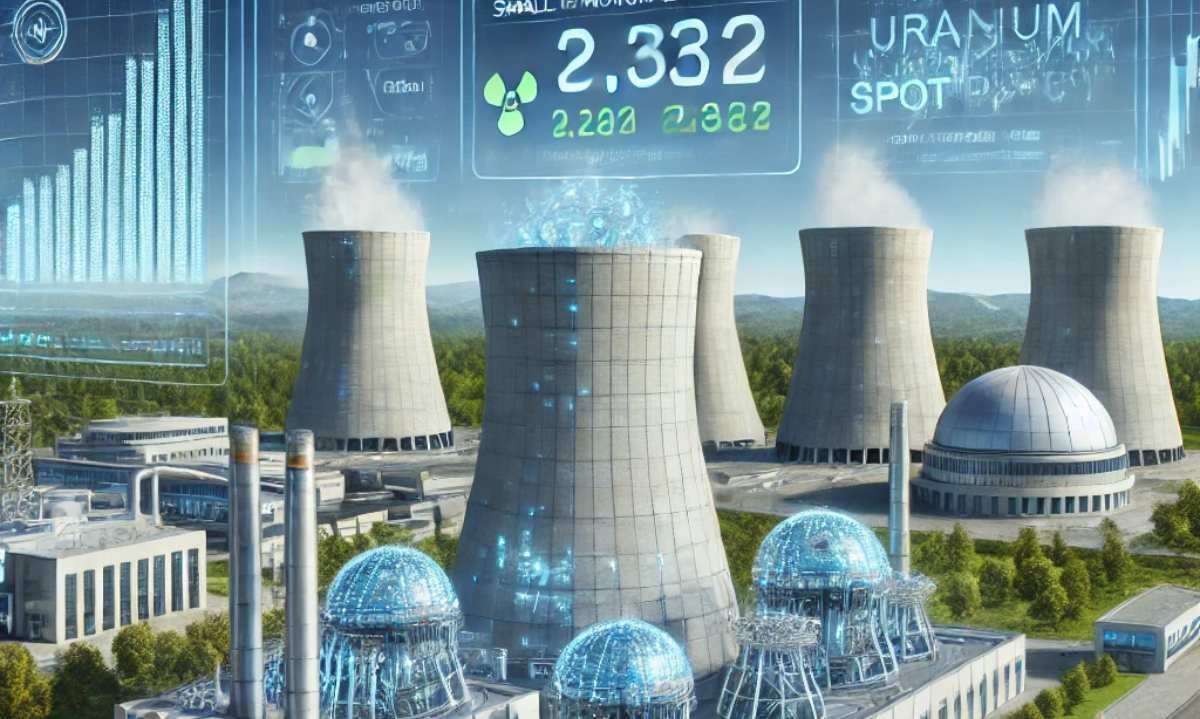
The resurgence of nuclear energy is driven by the need to reduce emissions and the rise of new energy technologies.
Nuclear energy is experiencing a significant revival after years of decline following the Fukushima disaster in 2011. This resurgence is fueled by rising uranium prices and the possibility of the Trump administration reclassifying uranium as a critical mineral, which could unlock federal funding and expedite permits for new projects in the U.S.
Uranium and Its Potential Reclassification as a Critical Mineral
In 2022, the U.S. Geological Survey (USGS) removed uranium from its critical minerals list, arguing that it is a "fuel mineral" that does not qualify. However, the January 20 executive order "Unleashing American Energy" urges the Secretary of the Interior to reconsider this decision.
If uranium is reclassified as a critical mineral, it could attract investment toward companies such as Energy Fuels (NYSE: UUUU; TSX: EFR), Uranium Energy (NYSE-AM: UEC), and Cameco (TSX: CCO; NYSE: CCJ), which stand to benefit from accelerated U.S. projects. Despite a recent decline in uranium prices from US$106 to US$71 per pound, the value remains higher than the decade-long average following the Fukushima disaster.
The Rise of Nuclear Energy in the Energy Transition
Interest in nuclear energy has increased due to its zero-emission nature and its capacity to meet the rising energy demands of artificial intelligence servers. However, this growth conflicts with Trump’s "America First" policy, which aims to reduce dependence on foreign imports.
Dependence on Foreign Uranium and Geopolitical Tensions
U.S. U3O8 production has declined by 96% over the past 25 years, dropping from 4.8 million pounds in 2014 to just 121,296 pounds in Q3 2023, according to the U.S. Energy Information Administration. Meanwhile, the country continues to rely on imports from Canada (27% in 2022) as well as Kazakhstan, Uzbekistan, Australia, and Russia (57%).
The Biden administration banned Russian uranium imports, prompting Russia to impose restrictions on its exports, except under specific licenses. Companies such as Uranium Energy and Energy Fuels have restarted mining operations in Wyoming, Utah, Texas, and Arizona to reduce dependency. In 2023, Uranium Energy signed a US$175 million deal to acquire Rio Tinto’s Wyoming assets.
Small Modular Reactors (SMRs): The Future of Nuclear Energy
Technological advancements in the nuclear industry continue to grow, with small modular reactors (SMRs) emerging as a viable alternative.
Core Power, a developer of floating nuclear technologies, has commissioned marine engineering consultancy Glosten to design a barge-based nuclear plant to power U.S. ports. Meanwhile, the Tennessee Valley Authority has applied for an $800 million grant from the Department of Energy to accelerate the construction of an SMR at Clinch River.
International Collaboration and Nuclear Sector Expansion
In Canada, Prime Minister Justin Trudeau signed an agreement with Poland to cooperate on peaceful nuclear technologies. In 2022, Poland selected Westinghouse, owned by Cameco, to build its first nuclear power plant. Additionally, Ontario Power Generation awarded a $1.1 billion contract to Candu Energy and Aecon Group for the modernization of the Pickering Nuclear Generating Station, which supplies 60% of Ontario’s electricity.




